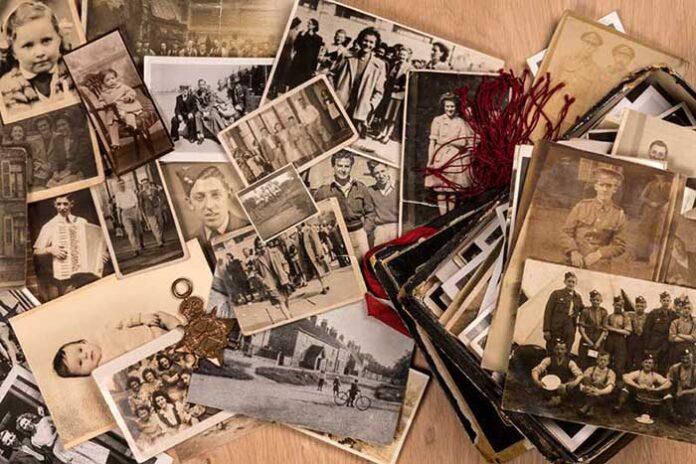By: Anna Faherty
Publisher: Museum Next
Date: July 7th 2019
Stories are universal. We all read, watch and listen to them. We all tell them. Stories are part of what makes us human. In fact, stories are so ubiquitous, we often don’t think about what makes a good story, or question why stories matter in the first place.
Why stories matter to museums
Museums are often thought of as places that collect, care for, display and interpret objects. While valid in many ways, this view omits the human element of museums.
An alternative approach is to think of museums as places that collate and share human experiences. This is the view put forward by Salvador Salort-Pons, Director of the Detroit Institute or Art in a recent article. More fundamentally, Salort-Pons describes museums as spaces for empathy and “a bonding medium for our society”.
Salort-Pons might as well have been writing about stories. Stories share personal experiences in an authentic and easily accessible form. They feel familiar, yet enable us to step into the shoes of others. They are full of detail, but leave space for us to insert our own thoughts, feelings and memories.
We use stories to make sense of the world. While we see ourselves in them, it is through stories that we encounter new perspectives that change how we think and feel.
At their core, stories make us care. They connect us with people and places, even stimulating the release of a hormone usually expressed during intense bonding experiences, like childbirth, breastfeeding and sex.
This emotional connection is the reason stories are so powerful. As any advertiser knows, stories drive people to take action, whether that’s buying a product, gifting a donation or making a difference in the world.
From a marketing perspective, stories can help museums raise funds, encourage visits and trigger sales. For instance, when the Tenement Museum in New York wrote about former First Lady Eleanor Roosevelt in a fundraising mailing it told a story about Roosevelt’s work in the local area. By connecting the teenage Roosevelt’s story with the Museum’s education programmes, the call to action was obvious: donate money and you could inspire a new generation of young Eleanor Roosevelts.
Looking beyond the museum itself, stories help organisations drive change in society. The Santa Cruz Museum of Art and History (MAH), once a place for art and history, now a place that uses art and history to build a strong community, puts stories centre stage. The Museum’s mission statement makes this clear: ‘we find, spark, preserve, and trade stories, ideas, and elements of creativity drawn from people across Santa Cruz County’. Stories are how MAH ignite shared experiences and unexpected connections.
How to find a story
Finding potential stories isn’t usually a problem. There are stories are everywhere. Look inside a museum and you’ll find stories about the foundation of the institution, the history of the building, the collection, individual objects and the people who made, used, sold or owned them.
Museums are also full of people, who bring their own stories with them, from researchers and other visitors to staff and volunteers. There is never just one story to tell. The myriad options can make finding one single story to focus on feel overwhelming.
The sphere in which museum stories live, undiscovered or untold, is vast. Like a marble slab waiting for the sculptor’s chisel, the possibilities are endless.
Finding the right stories is less about looking for them and more about thinking through what you need. You need to know who you are as an institution, what matters to your audiences and what you want your stories to achieve. Armed with this knowledge, you can start to make decisions about the sort of stories you want to tell.
These six questions can help you make smart choices as you develop stories for exhibitions, programming, fundraising and social media.
1. Who is the story about?
Museums habitually use objects as a starting point, but the most affecting stories are all about people. When we read, watch or listen to a story we want to identify with its central character, someone who takes action to overcome a challenge.
This doesn’t always mean the character looks or sounds like us. The Museum of Broken Relationships in Zagreb, which collects stories as much as objects, describes itself as ‘a museum about you, about us’. Since everyone can identify with its themes of love and loss, it is easy to sympathise with others’ experiences, whoever they are.
In fact, gathering stories from a range of people can make it easier for us to see ourselves in at least some of them and their lives. An interesting example of this is the BAC Moving Museum in London. In its London Stories performance, visitors explored its building in small groups, encountering members of the public telling their own stories about how they arrived in the city. The show ended with the opportunity to explore an exhibition of objects provided by the performers, each related to their story.
Like many museums working with refugees and migrants, this project gives a voice to those who may not usually be offered a platform. This, in turn, makes the Museum more relevant and inclusive.
Museums keen to engage with diverse audiences need to deliberately choose central characters that feel identifiable to these groups. As Marleen Hartjes of the Van Abbemuseum in the Netherlands puts it, the concept of accessibility applies as much to stories as it does to physical access: “if the story is not about you,” she says, “you will not come at all”.
2. What point of view are you taking?
Are you telling the story from the point of view of the central character? Or from someone who encountered them? This may sound like a stupid question, but stories about women or other historically disadvantaged groups have, more often than not, been told from someone else’s perspective.

As an example, the story of Mary Mallon, the Irish cook who inadvertently spread typhoid to several New Yorkers in the early 1900s, is usually told from the perspective of the man who doggedly tracked her down. In my own version, published by Wellcome Collection, I deliberately changed the perspective, so we start at the moment when Mallon is confronted by her pursuer. This allows us to see the story through Mallon’s eyes, not from the point of view of the man whose actions prompted her life-long incarceration.
Deliberate decisions like this challenge the historical norm, which privileges certain versions of stories above others. Conversely, a decision to tell the same old stories helps these privileges persist.
3. What goes wrong?
We find stories interesting and engaging because the main character encounters some sort of complication or obstacle. This might be a practical challenge or an emotional one.
The most powerful challenges are those we can all relate to – fundamental human issues like love, pain and loss. Complications like this effectively transform a story about one individual into a story of shared experiences.
The tension created by this complication is what makes us want to get to the end of the story. We are driven to find out what happens or, if we already know, to discover how the situation was resolved.
In the Museum of London’s exhibition Fire! Fire! the opening exhibition panel introduced a major obstacle:
London in 1666
A city recovering from the plague of 1665
A city of around 400 000 people
A country at war with France and the Netherlands
One night in September a fire starts in a bakery
The Great Fire of London begins…
It’s a great opening statement, which poses more questions than it answers. Audiences should be hooked, wanting to know more about how this story unfolds.
Laid out line by line on a black background, the design of the panel was reminiscent of the opening screen in a movie. This reflects the theatrical focus of the show; visitors later explored a dimly-lit seventeenth-century street and found themselves enveloped by digitally projected flames, as if assuming a role within the story.
4. What events will you share to move the story on?
Unlike the stories we all wrote as children, narratives aren’t usually a chronological list of everything that happens. Once your audience is engaged by a sympathetic character and the challenge they face, a story needs a series of events that show how the character resolves the problem.

In the Science Museum’s interactive touring exhibition The Science of Spying, visitors were given the opportunity to play a role in the narrative. The physical layout of the exhibition guided visitors through a series of story events, taking them from complication to resolution. After being ‘recruited’ at the entrance – where they received a spy ID – they made their way through a set of training exercises and received their mission. The mission is effectively the obstacle they need to overcome. With their preparation complete, they were sent undercover, infiltrating an organisation to collect information and crack a code. The story ended with their escape and debrief.
While this narrative-led exhibition was set up as a chronological adventure, other stories unfold in less time-driven steps. The trick is to arrange these events to reveal only as much as the audience needs to know at that specific point. Think about when your audience will ask questions like Who? Where? When? Why? and What happens next?. Then select and arrange a series of events to address this.
5. What details will you share?
In tandem with events that push the story forward, stories need information that adds context and detail. Mixing these two elements is a fine balancing act. Too many events and it’s difficult to understand what is happening. Too much detail and you reduce your story to a stream of consciousness.
Museums and archives are fantastic places for finding historical details. Archive resources reveal what people wore and read, how they decorated their home, what they ate, how they spoke and what they thought. More broadly, they can provide information about the weather, the cost of everyday things, social norms and attitudes to everything from health to wealth.
The details you share should place your audience right inside the story. These touches of colour, like the tints and audio added to the Imperial War Museum’s World War I footage in They Shall Not Grow Old, bring the story to life.
The Anne Frank House in the Netherlands shows how small details, like horizontal pencil lines scrawled on a wall, can have greater impact than raw facts. The lines mark the changing heights of people living in the House during the German occupation of Amsterdam in World War II. They remind us that Anne and her family are like any other family, despite the extreme circumstances they found themselves in. What’s more, the lines show us what an incredibly long time the family spent hiding in the House’s secret annex. A bald statement telling us the number of years is far less effective.
6. How does the story end?
All stories come to an end. The conclusion of a story sees the challenge or complication resolved by the actions of the central character.
Resolutions can be happy, sad or, as is the case with most true stories, somewhere in between. They involve the character changing the world around them in some way, the character changing themselves or both.
We find endings satisfying because they release the dramatic tension set up earlier in the story. They also provide an opportunity to consider what the main character has learned in the process.
Overall, good storytelling is about making smart choices. Choose a sympathetic character, an appropriate perspective and a compelling complication. Select a series of events that show how the character tackles the complication, colourful details that help us understand what is happening and a satisfying resolution. And choose what formats to use and how to distribute and share stories.
Of course, there is one fundamental choice: whether to find, create and share stories in the first place. Perhaps that is a moot question, though. As museum consultant Leslie Bedford wrote almost two decades ago, “Museums are storytellers. They exist because once upon a time some person or group believed there was a story worth telling, over and over, for generations to come.” For museums, like humans, stories are a natural part of life. It’s just a matter of choosing which stories to tell and how.
Source: https://www.museumnext.com/article/why-do-stories-matter-to-museums-and-how-can-museums-become-better-storytellers/
Comment: This article shows us how to tell stories in museums and why they matter. Stories in museums are important because they hold information on some of the most crucial times in our species. These stories can change the lives of those who listen, but museums need to start telling stories properly. Museums focus too much on the artifacts and objects that exist there rather than the people that existed during the period. As seen in works like Harry Potter, building rich and fruitful characters are how we can actually begin to engage individuals into the story. Museums and other experience based interactions can begin to do this sort of thing by structuring their displays. There needs to be a beginning, a middle, and a conclusion to what they have to say and customers need to be a part of it. This is seen in the science of spying display where guests take on the role of a spy and learn about the practice as they go about completing their own spy mission. This sort of thing could also utilize 3D printing at a large scale to create modular environments inviting guests to explore different places and environments every time they visit a museum or theme park. It would allow them to get a different chunk of the story with each visit and create a convincing enviroment for them to learn in.




